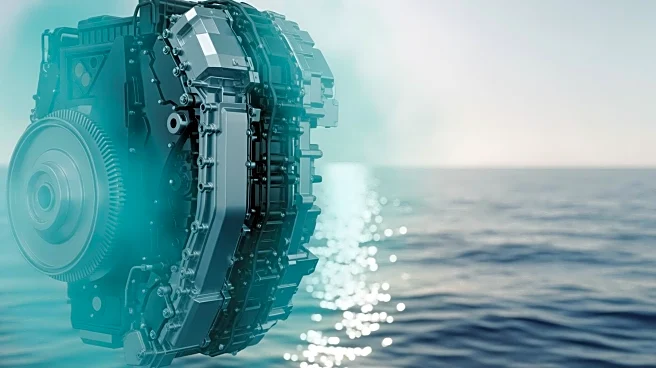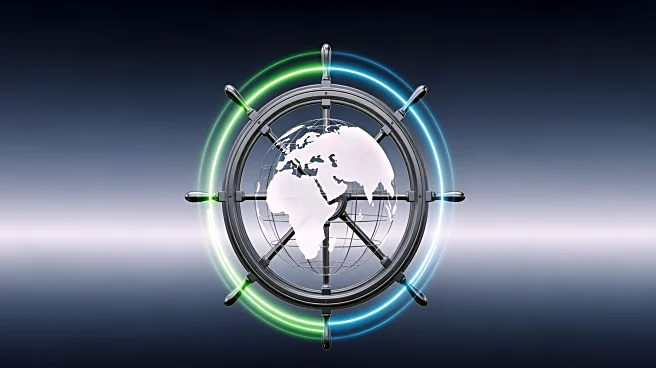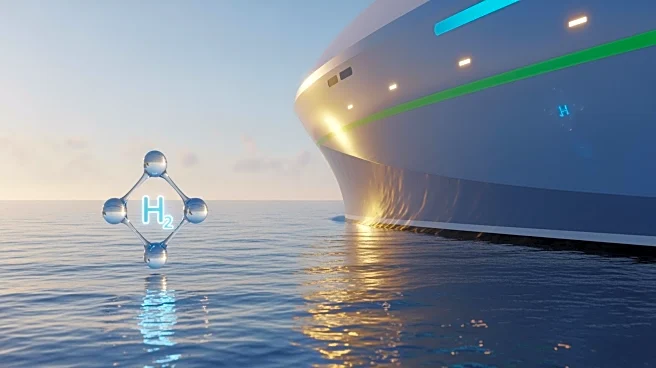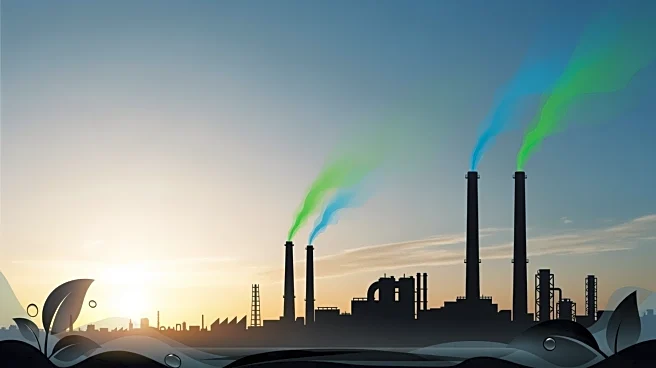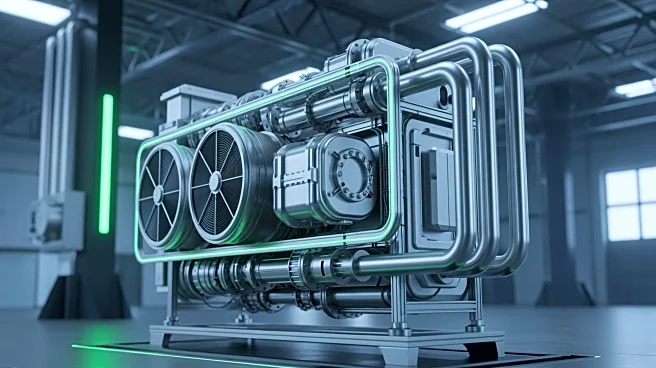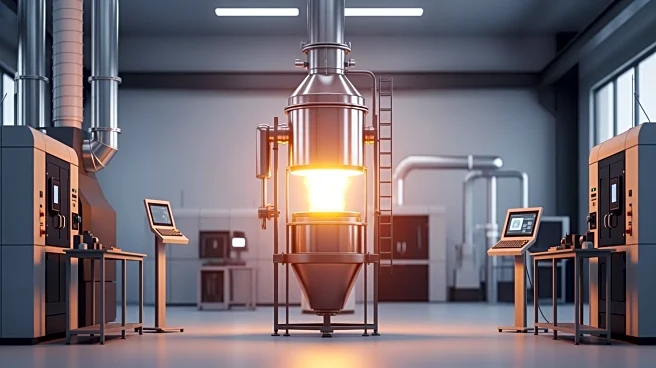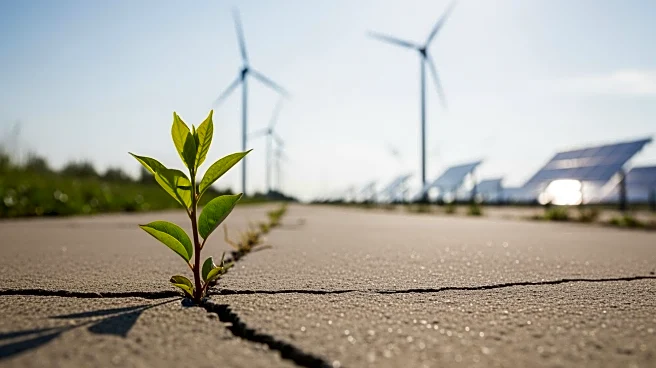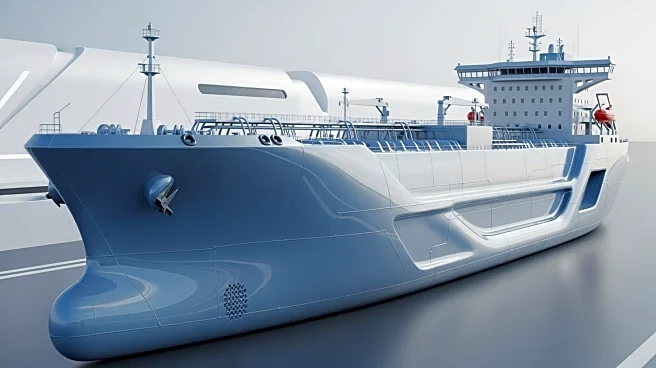What's Happening?
Everllence has introduced its new dual-fuel ME-LGIA engine, designed to run on ammonia, at an event in Copenhagen. The engine is part of Everllence's efforts to advance the green transition in the maritime
industry. It features safety enhancements tailored for ammonia use, including containment systems and sensors. The first engine is set for delivery in Q1 2026, with several pilot projects underway, including installations on Very Large Ammonia Carriers and other vessels. The engine aims to support zero-carbon shipping by utilizing ammonia's carbon-neutral properties when produced from renewable sources.
Why It's Important?
The introduction of the ME-LGIA engine represents a significant step towards decarbonizing the maritime industry. Ammonia, as a carbon-free alternative to fossil fuels, offers a promising solution for reducing emissions in shipping. The engine's development aligns with global efforts to transition to sustainable energy sources, potentially influencing industry standards and regulations. By leveraging ammonia's high energy density and ease of storage, the engine could facilitate the adoption of cleaner fuels in large ocean-going vessels, contributing to environmental sustainability.
What's Next?
Everllence plans to continue testing and refining the ME-LGIA engine through pilot projects, gathering operational data to optimize performance. The company aims to expand its offerings with retrofit options and additional bore sizes. As the maritime industry increasingly prioritizes sustainability, the successful implementation of ammonia engines could lead to broader adoption and regulatory support. Stakeholders, including shipowners and environmental groups, may advocate for policies that encourage the use of ammonia and other clean fuels, driving further innovation in maritime technology.
Beyond the Headlines
The development of ammonia engines highlights the growing importance of alternative fuels in achieving climate goals. As industries seek to reduce their carbon footprint, ammonia's potential as a sustainable fuel source could extend beyond shipping, influencing other sectors such as agriculture and energy. The collaboration between Everllence and regulatory bodies underscores the need for safety and compliance in adopting new technologies. This partnership may serve as a model for future initiatives aimed at integrating clean energy solutions into existing infrastructure.
